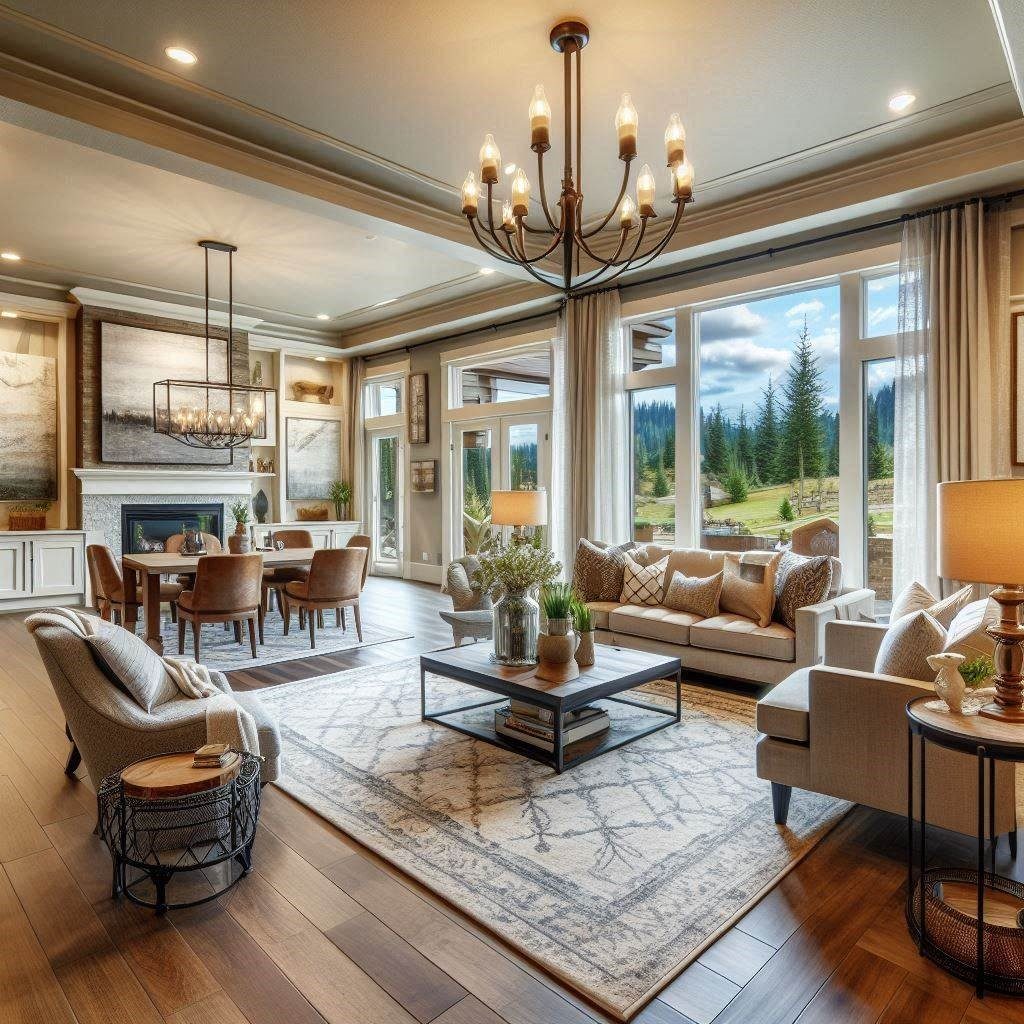When it comes to selling a home, first impressions are everything. The way your home is presented to potential buyers can significantly influence their perception and, ultimately, their decision to make an offer. This is where home staging comes into play. Staging your home effectively can make the difference between a quick sale and a property that lingers on the market. In this article, we’ll explore the top considerations for staging a home, compare the advantages of virtual staging versus live staging, and discuss what’s important to focus on—and what you can skip.
The Importance of Home Staging
Before diving into the specifics, it’s essential to understand why staging is crucial. Home staging transforms a property into a warm, inviting space that buyers can envision themselves living in. It highlights the home’s best features, downplays its flaws, and creates a neutral environment that appeals to a broad audience. A well-staged home can attract more interest, potentially leading to higher offers and a faster sale.
Key Considerations When Staging a Home
- Understand Your Target Market:
- The first step in staging is understanding who your potential buyers are. Are they young professionals, families with children, or retirees? Knowing your audience helps you tailor the staging to meet their needs and preferences. For example, if your target market is young families, you might want to highlight the home’s spacious backyard and family-friendly layout.
- Maximize Space:
- One of the main goals of staging is to make the home feel as spacious as possible. This means decluttering, removing unnecessary furniture, and arranging the remaining pieces in a way that enhances the flow of the space. Buyers are looking for a home that feels open and airy, so anything that creates a sense of spaciousness is a plus.
- Highlight Key Features:
- Every home has unique features that should be highlighted. Whether it’s a beautiful fireplace, large windows with a great view, or an updated kitchen, make sure these selling points are front and center. Use furniture placement and décor to draw attention to these areas.
- Neutralize the Space:
- Personal touches, such as family photos or bold, personalized décor, can make it harder for buyers to imagine themselves in the space. The goal is to create a neutral, universally appealing environment. Stick to a neutral color palette and avoid overly specific or trendy design choices.
- Update and Refresh:
- A fresh coat of paint, new hardware, or updated light fixtures can make a significant difference. These relatively low-cost updates can modernize the space and make it more attractive to buyers.
- Enhance Curb Appeal:
- The exterior of the home is the first thing buyers see, so don’t neglect it. Ensure the lawn is well-maintained, the exterior is clean, and add some fresh flowers or plants to create a welcoming entrance. First impressions start from the curb, so this step is crucial.
Virtual Staging vs. Live Staging: What’s the Difference?
When it comes to staging, you have two primary options: virtual staging and live (traditional) staging. Each has its own set of advantages and considerations.
Virtual Staging
Advantages:
- Higher quality photos: Virtual staging puts no ceiling on the furniture that can be placed in the home. With physical staging you are often limited to what is in the stager’s warehouse.
- Flexibility: It allows for easy changes and updates. If you want to showcase different styles or layouts, it can be done with a few clicks.
- Speed: Virtual staging can be done quickly, often within a few days. Physical staging can sometimes be subject to several week delays to get furniture in the house.
- Customization: You can tailor the staging to different buyer demographics without the hassle of moving furniture in and out of the home.
Considerations:
- Limited Impact on Walkthroughs: Since virtual staging only exists in photos, the actual property may feel empty or underwhelming during in-person showings.
- Potential for Mismatched Expectations: Buyers might expect the home to look as it does in the virtually staged photos, which could lead to disappointment if the space is empty or doesn’t match the photos exactly.
- Home Vacant for Photos: To virtually stage a home, it is optimal to photograph the home vacant which isn’t helpful for sellers who are occupying the property.
Live Staging
Advantages:
- Tangible Experience: Live staging allows buyers to experience the space in person, which can create a stronger emotional connection and help them envision living in the home.
- Enhanced Walkthroughs: Staged homes can feel more inviting to certain buyers and can help buyers better understand the size and layout of the space during in-person viewings.
- Showcase Your Existing Furniture: For sellers who are still living in their home, taking a bit of time with your agent’s help to stage existing furniture can be a huge advantage over emptying the home out to virtually stage it.
Considerations:
- Limited Options: Live staging is often limited to what is available in a stager’s warehouse. The furniture is sometimes suboptimal for the space or style of the home.
- Logistics: The process of moving furniture in and out can be time-consuming and disruptive, particularly if the home is still occupied.
- Time-Consuming: Live staging requires time for setup, maintenance, and eventual removal, which could delay the listing process.
What’s Important and What to Skip
Focus On:
- Key Rooms: Prioritize staging the most important rooms, such as the living room, kitchen, and master bedroom. These are the spaces buyers focus on the most.
- Cleanliness and Maintenance: A clean, well-maintained home is more appealing than one that is merely staged with furniture. Make sure the home is spotless before any staging begins.
- Lighting: Good lighting can make a huge difference. Ensure all light fixtures are working, and consider adding lamps or other light sources to brighten up the space.
Skip:
- Overly Personal Touches: Avoid staging that is too personalized or specific. The goal is to appeal to the widest possible audience.
- Unnecessary Upgrades: Not all upgrades yield a high return on investment. Focus on updates that will make a significant impact, such as fresh paint or new hardware, rather than expensive renovations that may not pay off.
- Outdoor Furniture: Unless you have a particularly stunning outdoor space, it’s usually not necessary to stage outdoor areas beyond basic maintenance and a few decorative touches.
Conclusion
Staging is a powerful tool in the real estate market, and whether you choose virtual staging or live staging, it’s essential to approach it strategically. By understanding your target market, focusing on key areas of the home, and making smart staging decisions, you can enhance the appeal of your property and increase your chances of a successful sale. Remember, the goal of staging is to create a space where buyers can imagine their future, and that vision starts with how the home is presented.
Work with an agent with decades of staging experience, like Vince Grant, of Grant Team Properties at ReMax Elite.


